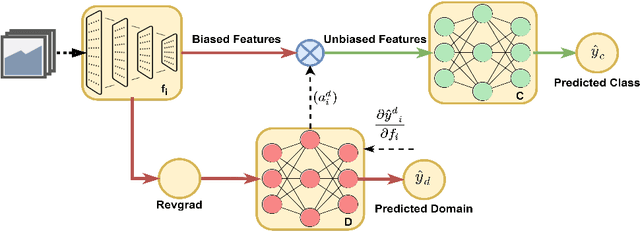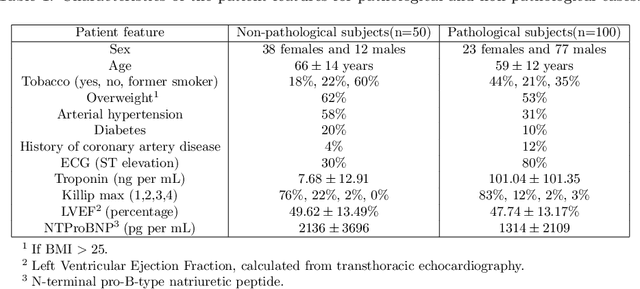Rishabh Sharma
Gradient Based Activations for Accurate Bias-Free Learning
Feb 17, 2022



Abstract:Bias mitigation in machine learning models is imperative, yet challenging. While several approaches have been proposed, one view towards mitigating bias is through adversarial learning. A discriminator is used to identify the bias attributes such as gender, age or race in question. This discriminator is used adversarially to ensure that it cannot distinguish the bias attributes. The main drawback in such a model is that it directly introduces a trade-off with accuracy as the features that the discriminator deems to be sensitive for discrimination of bias could be correlated with classification. In this work we solve the problem. We show that a biased discriminator can actually be used to improve this bias-accuracy tradeoff. Specifically, this is achieved by using a feature masking approach using the discriminator's gradients. We ensure that the features favoured for the bias discrimination are de-emphasized and the unbiased features are enhanced during classification. We show that this simple approach works well to reduce bias as well as improve accuracy significantly. We evaluate the proposed model on standard benchmarks. We improve the accuracy of the adversarial methods while maintaining or even improving the unbiasness and also outperform several other recent methods.
Deep Learning methods for automatic evaluation of delayed enhancement-MRI. The results of the EMIDEC challenge
Aug 10, 2021



Abstract:A key factor for assessing the state of the heart after myocardial infarction (MI) is to measure whether the myocardium segment is viable after reperfusion or revascularization therapy. Delayed enhancement-MRI or DE-MRI, which is performed several minutes after injection of the contrast agent, provides high contrast between viable and nonviable myocardium and is therefore a method of choice to evaluate the extent of MI. To automatically assess myocardial status, the results of the EMIDEC challenge that focused on this task are presented in this paper. The challenge's main objectives were twofold. First, to evaluate if deep learning methods can distinguish between normal and pathological cases. Second, to automatically calculate the extent of myocardial infarction. The publicly available database consists of 150 exams divided into 50 cases with normal MRI after injection of a contrast agent and 100 cases with myocardial infarction (and then with a hyperenhanced area on DE-MRI), whatever their inclusion in the cardiac emergency department. Along with MRI, clinical characteristics are also provided. The obtained results issued from several works show that the automatic classification of an exam is a reachable task (the best method providing an accuracy of 0.92), and the automatic segmentation of the myocardium is possible. However, the segmentation of the diseased area needs to be improved, mainly due to the small size of these areas and the lack of contrast with the surrounding structures.
FireNet: A Specialized Lightweight Fire & Smoke Detection Model for Real-Time IoT Applications
May 28, 2019



Abstract:Fire disasters typically result in lot of loss to life and property. It is therefore imperative that precise, fast, and possibly portable solutions to detect fire be made readily available to the masses at reasonable prices. There have been several research attempts to design effective and appropriately priced fire detection systems with varying degrees of success. However, most of them demonstrate a trade-off between performance and model size (which decides the model's ability to be installed on portable devices). The work presented in this paper is an attempt to deal with both the performance and model size issues in one design. Toward that end, a `designed-from-scratch' neural network, named FireNet, is proposed which is worthy on both the counts: (i) it has better performance than existing counterparts, and (ii) it is lightweight enough to be deploy-able on embedded platforms like Raspberry Pi. Performance evaluations on a standard dataset, as well as our own newly introduced custom-compiled fire dataset, are extremely encouraging.
 Add to Chrome
Add to Chrome Add to Firefox
Add to Firefox Add to Edge
Add to Edge